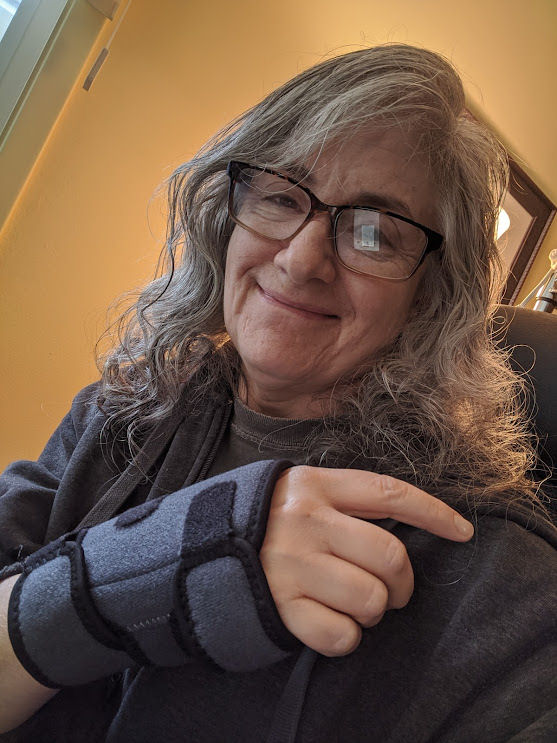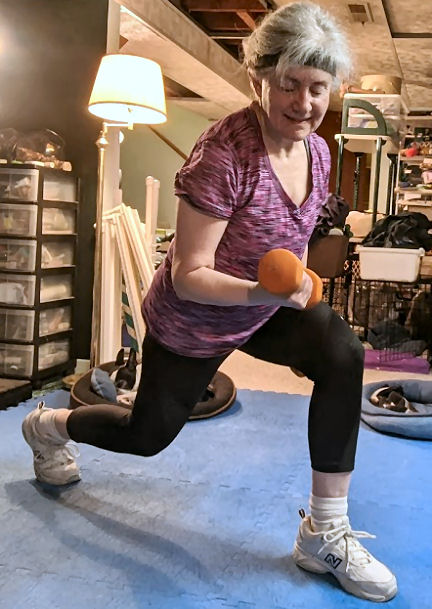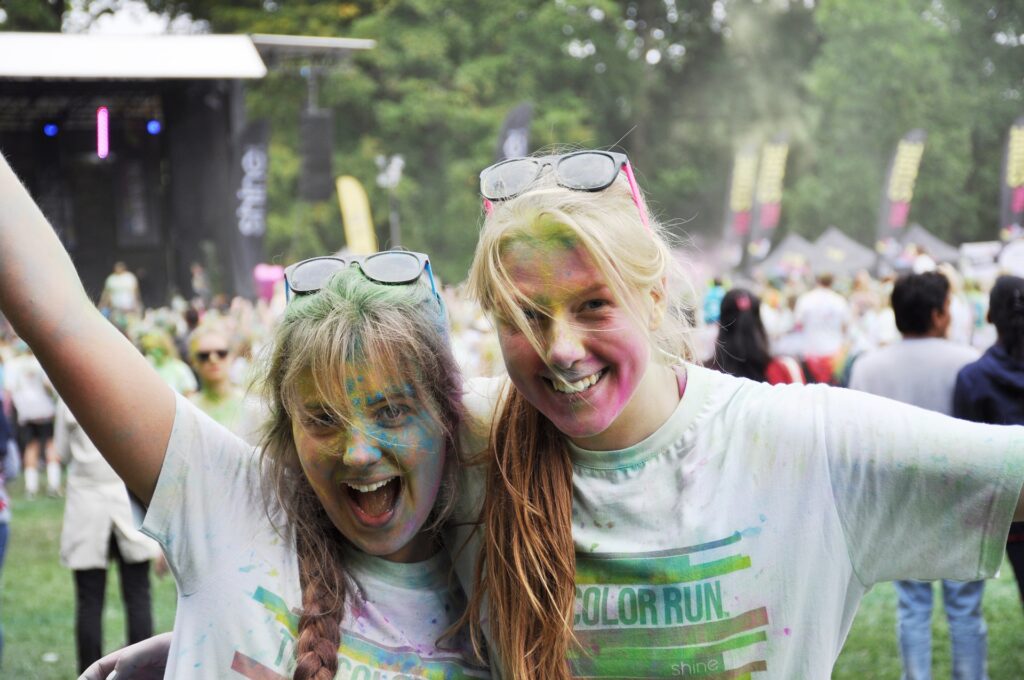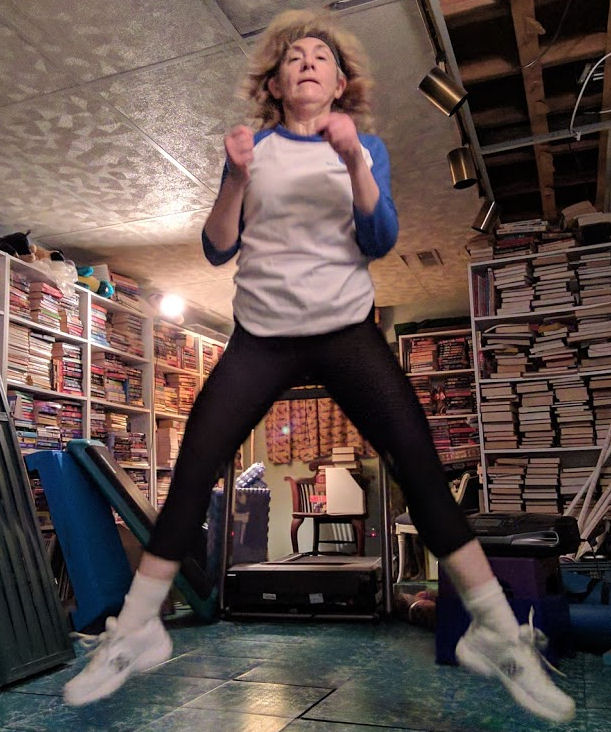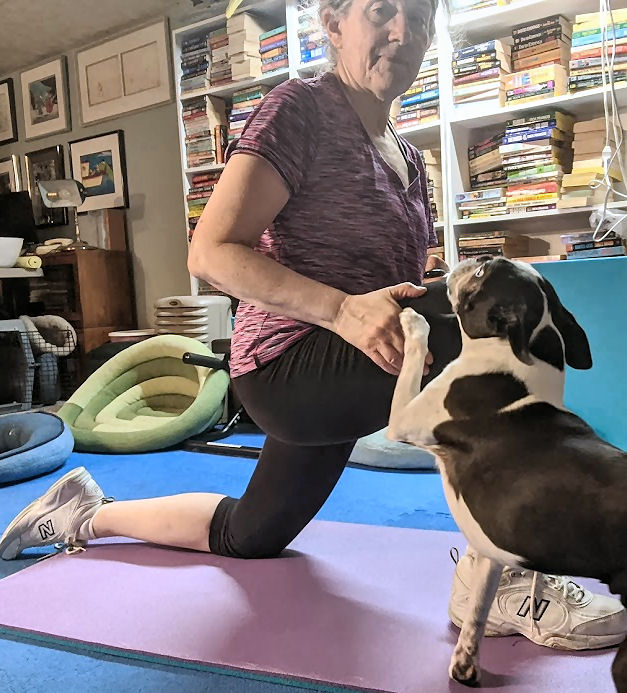I took a tumble not quite 2 weeks ago and injured my right arm. My wrist got the worst of it – it’s still giving me trouble. So much so that I can’t put much weight on it and it hurts to bend it sometimes. So – how to exercise with limited mobility?
Not even a plank
As you know, my favorite form of exercise combines strength and cardio. But such exercise with limited mobility is practically impossible. Body weight strength exercises are great, but a plank is out of the question for me.
To not exercise is also out of the question. It’s such a habit for me that if I’m home and not doing anything else at the time I usually exercise, the guilt is practically overwhelming. So the last few days I’ve been exercising without weights and with limited arm involvement. I know that when my arm is better, I’ll have a lot of catching up to do, but I’m grateful the injury isn’t worse.
So what exercise to do?
So, what exercise have I been doing with my arm out of commission? I’ve been cardio-bingeing. I’ve been doing my walk / run on the treadmill. And I’ve rediscovered the fun of step aerobics. I talked about doing step aerobics as a great stress-reducer a while ago, but it really is a super workout. Even with the risers lower than I used to have them, the sweat was dripping off my face.
Others deal with limited mobility
My injury made me think about how others exercise with limited mobility. If (heaven forbid) my wrist injury became more permanent, I would certainly investigate the possibility of swimming in my area. Swimming is a great, non-weight-bearing cardio exercise with other benefits as well. Walking outside is certainly another possibility. If the weather warms up again here and I’m still recovering, I may take to the greenway path nearby. And I may queue up some favorite songs and dance.
Limited mobility is no excuse to not exercise
The US Centers for Disease Control (CDC) recommends that everyone, at any age, have physical activity to maintain their good health. In fact, all adults, with or without disabilities, according to the CDC’s Guidelines should get at least 150 minutes (2.5 hours) of aerobic physical activity per week. However, the CDC has found that less than half of those with disabilities and limited mobility engage in aerobic physical activity. They’ve put together a resource for those with limited mobility to get ideas for getting the activity they need.
I’ve certainly gained new respect for people who stay motivated to exercise with limited mobility. It takes extra gumption to find ways to stay as active as they need to be, given the barriers society puts in their way.

